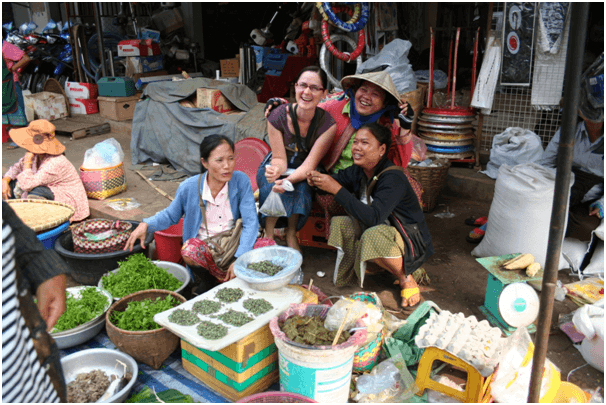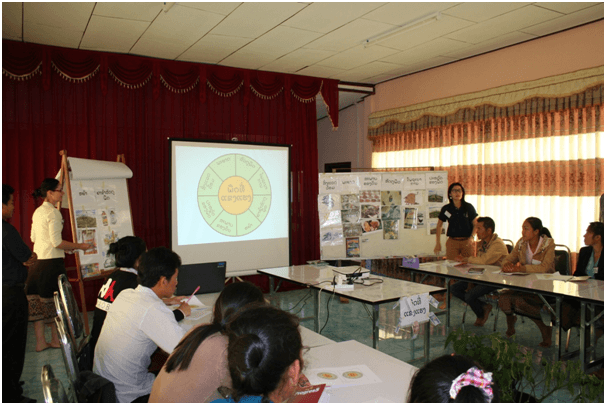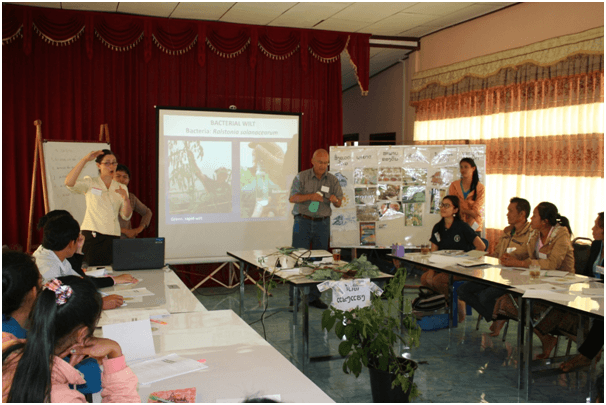Paying it Forward
Australian Volunteer for International Development
I am fortunate. Really fortunate. So are you by the way. Chances are we’ve all graduated high school, probably even been to university, and when we go to the shops we don’t have to haggle over the bottom dollar price. And while we worry over the next pay cheque and paying the rent, I know I come from a country where support systems are in place to care for me if all else fails. Elsewhere, people are lucky to finish primary school, not through lack of intelligence, but through lack of money and opportunity. They work the hard jobs in the fields so that other people can eat, while barely feeding their own families. And that’s why I volunteer – because even if I don’t have a lot of money to give, I have knowledge to give – and a little bit of knowledge can go a long way to improve lives and livelihoods in a developing country.
To be honest, I always thought agriculture was a bit boring – I graduated with a PhD in Plant Biosecurity in 2012, focusing on forest pathology and climatic risk modelling…..not exactly a good segue into development work, where agriculture is much more dominant. I’d always wanted to volunteer and I knew my plant pathology skills were transferrable to agriculture, but I wasn’t prepared for how exciting agricultural plant pathology can be, especially in a developing country.
As a volunteer plant pathologist with the Champasak Provincial Crop Disease Diagnostics Laboratory in Pakse, Laos, no two days are ever the same – surveying in cabbage fields in the pouring rain, doing laboratory diagnostics, teaching plant disease theory and Integrated Disease Management (IDM) in Lao-glish to famers and government officers while dining on fried fish and frogs is all in a week’s (and sometimes day’s) work. I work with incredible people in an incredible location with incredible plant diseases. And what a training ground! I have surveyed more than 20 different crops in the last year alone, seen more than 50 plant diseases, diagnosed at least 15 of these and worked with at least three biosecurity threats to Australian plant industries and ecosystems.
Supported by Scope Global, who manage the Australian Volunteers for International Development program on behalf of the Australian Government, and partnered with the Crawford Fund, we are working to provide a bright future for Laos agriculture through capacity development in crop disease diagnostics, Integrated Disease Management and more recently, pest diagnosis and Integrated Pest Management – with entomology volunteers starting in 2014. The Crawford Fund is pivotal in ensuring our work is successful – supporting workshops in Integrated Disease Management, Plant Disease Diagnostics, Bacterial Diagnostics, and Integrated Pest Management. Our mentor Professor Lester Burgess (NSW Committee) is a great teacher and has ensured the success of the program through a long-term commitment (since 2009) to our Lao counterparts. Laos struggles to sustain its own research agenda but in a country where relationships make things possible, a global and a committed long-term approach is not only needed, but necessary. Additionally, we have built strong relationships with local non-profit associations, the Australian Centre for International Agricultural Research (ACIAR) and the United Nations Food and Agricultural Organization (UN FAO), to ensure our work is far-reaching, effective and synergises with other active projects.
The work is thoroughly rewarding and I implore anyone who is interested to get involved – the Crawford Fund Committee of NSW is committed to the people of Laos and our local counterparts in the government to assist with long-term capacity building in the fields of plant pathology, entomology, food safety, agronomy and weed science. Get involved as a mentor, a volunteer or as part of the home support team (experts in any of the above fields) – new assignments are set to be advertised over the coming years, and there may even be room to discuss potential assignments with individuals prior to advertisement. Do it, I guarantee you’ll be rewarded!

Figure 1: Laughing with local market ladies after being hand fed weevils for lunch. Discussions with marketers can help to understand supply chains and locations of potential plant pathogen and insect pest outbreaks.

Figure 2: Teaching about Plant Health in Lao language
 Figure 3: Teaching about Integrated Disease M (IDM) for Bacterial Wilt in tomatoes in English and Lao language – visual displays of disease and IDM strategies (alcohol spray with Professor Lester Burgess) are key to communicating cross culturally.
Figure 3: Teaching about Integrated Disease M (IDM) for Bacterial Wilt in tomatoes in English and Lao language – visual displays of disease and IDM strategies (alcohol spray with Professor Lester Burgess) are key to communicating cross culturally.


